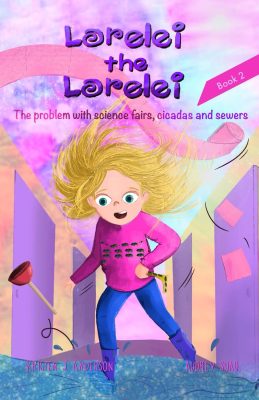If you’re a fan of techno-thrillers, you’ll want to read Petroplague by Amy Rogers just for the breath of fresh air it brings to the genre, especially by its characters—all realistic scientists behaving like real scientists would–and a fresh plot that avoids some of the tired clichés—lots of murder, mayhem, and a protagonist who performs a series of almost superhuman feats, one after another, and emerges unscathed. If you don’t usually read techno-thrillers, this one’s definitely worth picking up for the same reasons—it’s different.
Christina Gonzales, the protagonist, is attractive and has a pleasant personality. However, she doesn’t wear make- up, and she dresses with comfort in mind. She’s investigating a strain of petroleum-eating bacteria, like those used to assist clean-up efforts after the Exxon Valdez disaster, for her PhD thesis at UCLA. Her bacteria, Syntrophus, are different in that they are anaerobic, and they work in concert with other bacteria deep in crude oil deposits to produce methane, the principle ingredient in natural gas. She is also helping her thesis adviser, develop a strain of E. coli that will produce isobutanol, a good but expensive substitute for gasoline.
Christina shares an apartment with her cousin River and River’s boyfriend, Mickey, which is near the UCLA campus. The real action begins when we learn that an eco-terrorist bomb, which exploded in an underground storage tank of an abandoned gas station in South LA, destroyed Christina’s pilot project and thesis. The tanks, loaded with instrumentation, were filled with low-grade crude oil infected with Christina’s oil-eating bacteria. It quickly becomes clear that Christina’s bacteria were also released by the explosion and have evolved into aerobic organisms that are gobbling up gasoline, diesel fuel, and jet fuel. Also, out of their underground anaerobic environment, the bacteria are producing, not methane but acetic acid and hydrogen, an odorless, invisible and extremely explosive gas. This is the beginning of the LA petroplague.
Cars, trucks and planes grind to a halt as Christina’s bacteria consume their fuel, while free hydrogen gas causes explosions and fires around the city. In an artful twist, Christina realizes that she has inadvertently passed information to the eco-terrorist. As the cast of characters continues to grow, Rogers weaves them into an intricate plot as the science becomes intriguingly more complex.
Amy Rogers, a Harvard educated, M.D., and Ph.D., writes thrilling science-themed novels that pose “frightening what if? questions.” She grounds her thrillers in fact until the last possible second. Then she blurs the lines between fact and fiction. This is where Rogers well-crafted explanations maneuver her readers to become wrapped up in the story-line and with its compelling characters.
In the interest of scientific literacy, Rogers added five-pages of technical notes at the end in which she explains the scientific details (with references, bless her heart) and distinguishes between and the parts where, she admits, “I made this stuff up.” I can recommend Petroplague without hesitation to readers fascinated by real science as well as to my most science-phobic friends. The revelations in her writing will make readers feel like they are insiders in a field that only an elite few understand.










Leave A Comment